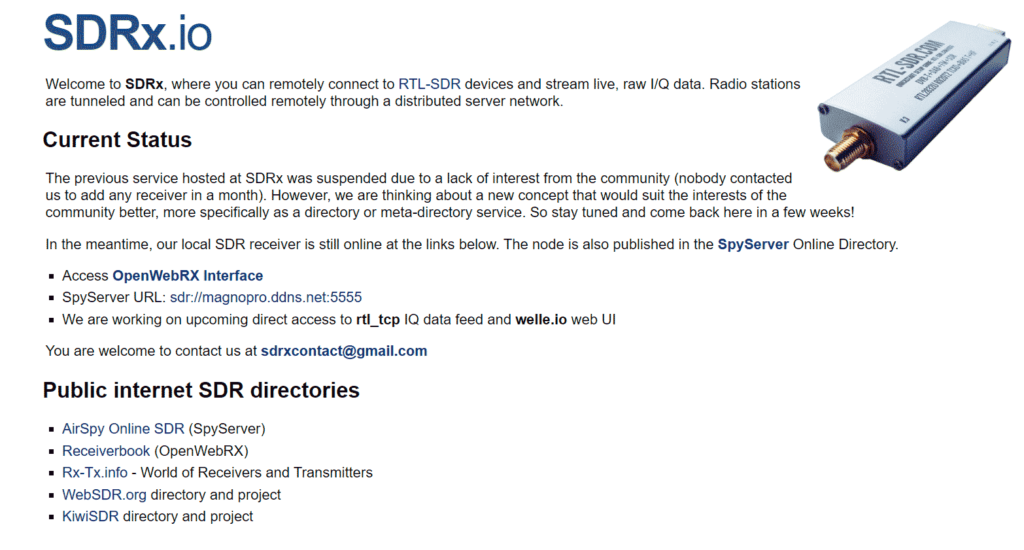SDRx.IO – A Public Server Network for RTL_TCP and/or Spyserver Stations
Thank you to Matt from SDRx.io for submitting a story on our forums about his project called SDRx.IO which is a service that hopes to be a platform that allows remote users to find and connect to public RTL_TCP and/or SpyServer servers. Matt writes:
A few days ago I started a project called SDRx.io. I could not find any platform with public RTL-TCP servers, so I thought I would try to make one for fun.
SpyServer mode (through internet proxy) is also supported. The official map/directory currently does not seem to support this. SpyServer is the default mode, because SDR stations can "somewhat" be shared between multiple clients.
Users can switch radio station modes using the web interface.
SDRx.io routes traffic in a way that protects the actual endpoint from internet exposure, and the server network acts as a CDN (the project currently has 5 servers). Servers can be seen as proxies for radio stations that host the SDR hardware.
The early preview currently on the site only has my own first 2 stations in Switzerland for VHF/UHF, and I am now looking for other users who would be interested in hosting/sharing new radio stations to connect to this project, or participate otherwise.
Required network throughput for RTL-TCP is about 35 mbps at 2.048 MS/s
I know there are already several other projects with public SDR servers, but few carry the full IQ signal, and none are currently providing direct TCP connections compatible with the rtl_tcp protocol.
Your feedback is of course welcome here :D
The service is currently not yet active due a lack of initial interest, but if you are interested you can get in contact with Matt at [email protected].

Because the rtl_tcp protocol does not provide a way to tell connecting clients what frequency it’s currently on – it was designed to be controlled by a single client that dictates the current frequency